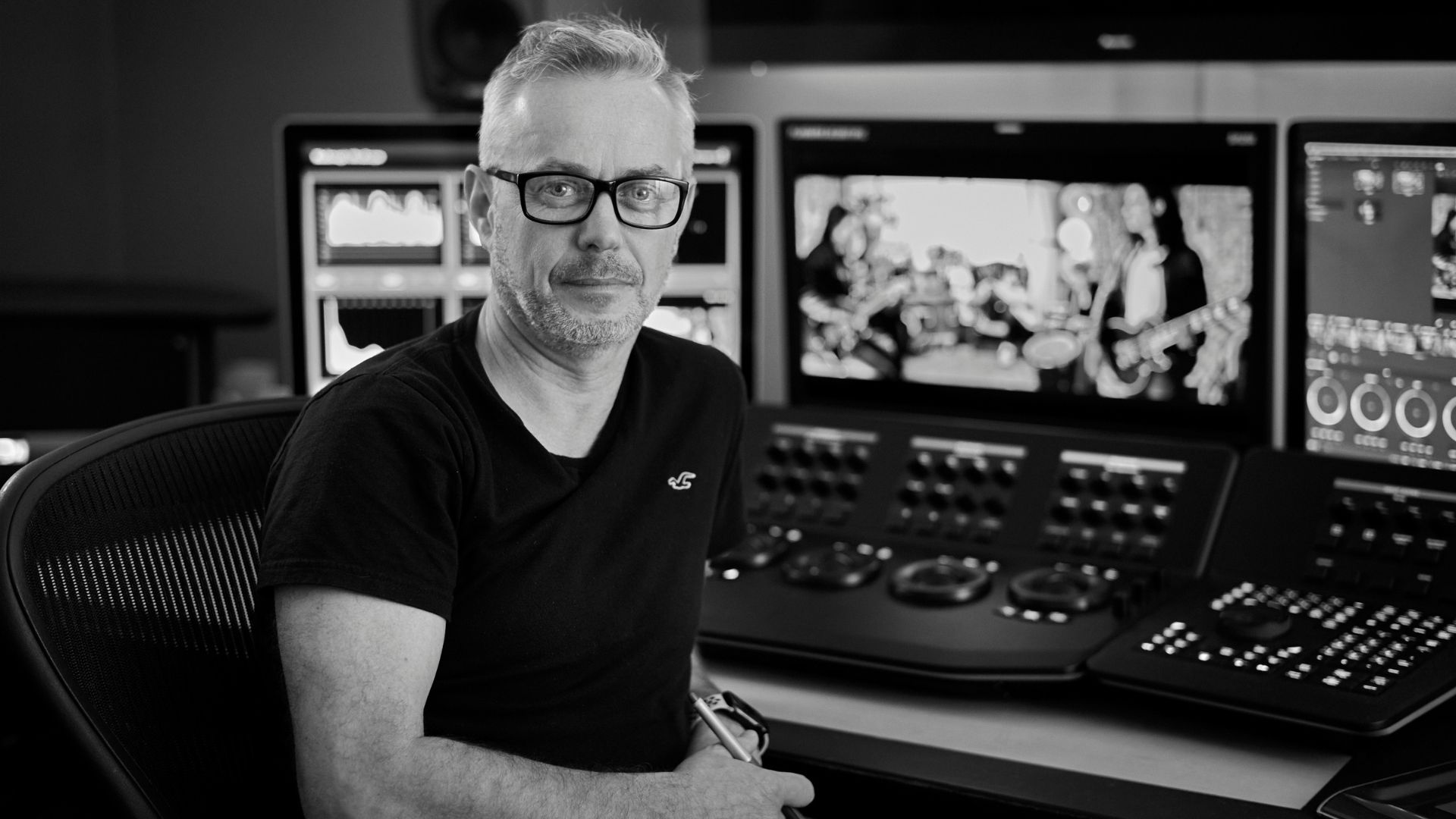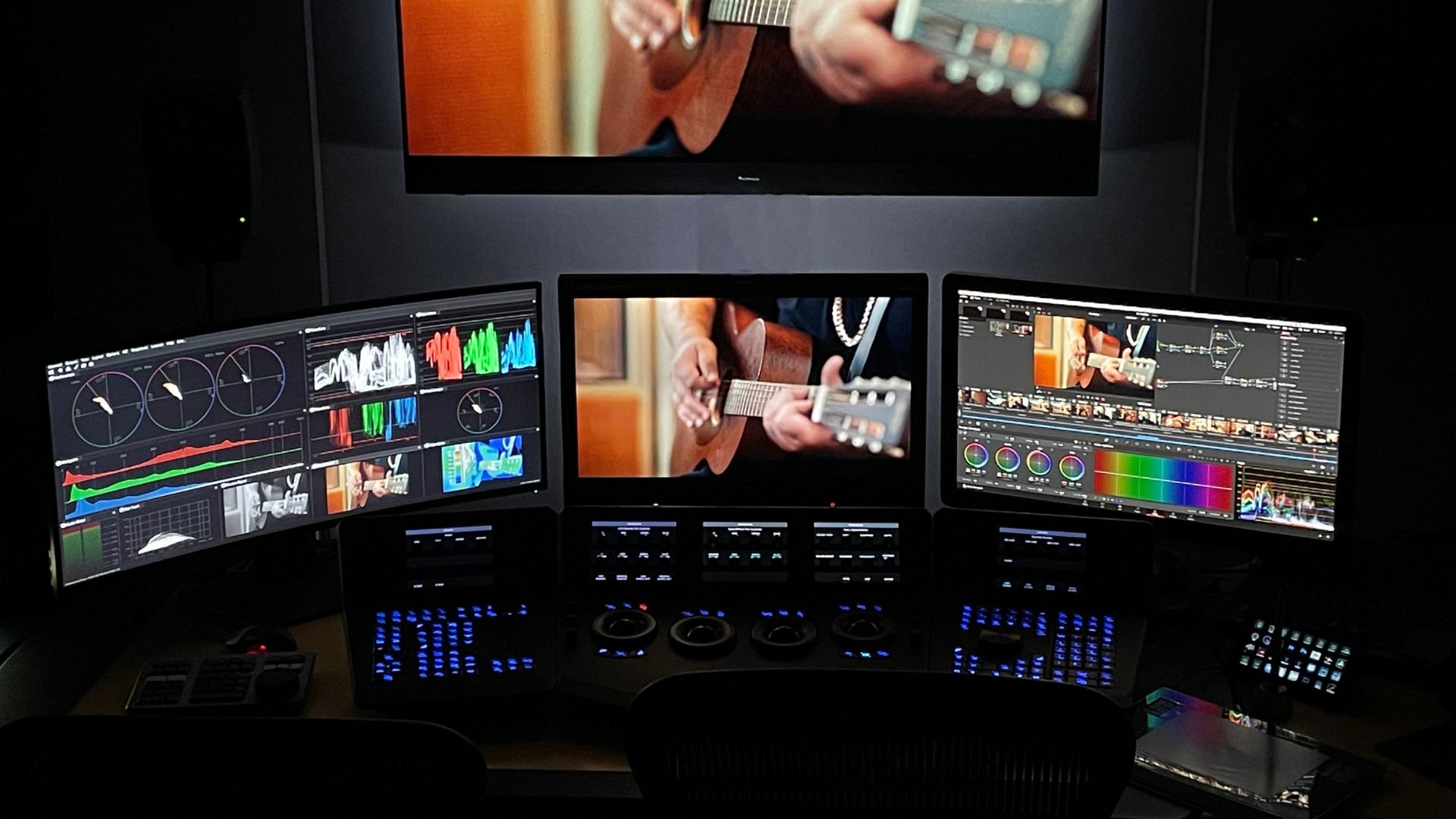
Like the whole of film production, colour grading has faced a rapid evolution during the past decade. We talked to Darren Mostyn senior UK-based colorist at Online Creative, whose work appears on BBC, ITV, Channel 4, Amazon and many more, about the changing nature of grading.
How has grading changed over the past decade?
Colour grading has changed hugely over the last decade. It is now far more accessible to anyone, with excellent software being available for free. One pleasing difference is the take up of HDR, giving a new dimension to colour grading and is certainly here to stay. The toolset has become far more advanced allowing for more of a crossover from simple colour grading to advanced VFX and tools that allow things like object removal much simpler than they would have been a decade ago. This doesn’t mean that colourists are now VFX artists, but it allows us to offer up quick fixes if we don’t want to go deep.
For me, the most important change is colour management. Colour management is now far more than just a LUT that we have previously used. It allows us to get the shot not only from what was seen by the camera to our display correctly but also to match it to the correct camera type. Colour management enables different systems to talk to one another in an accurate way. Output for different deliverables such as HDR and SDR versions are far more controlled with good colour management. There is much more choice of systems now and most NLEs have some sort of colour grading tools built in so it doesn’t need to be a dedicated grading software anymore, although some are far more advanced than others.
Where are the challenges? What do you see come into the suite and think 'Uh no, this is going to be difficult?
Challenges are part of almost every job and that is where experience kicks in. Knowing which tools to use to improve a shot to the best it can be, comes with experience.
Archive footage can be tricky. Having graded many broadcast documentaries, you realise that they are generally harder to grade compared to music promos or features as interviews are often filmed in situations to help tell a story. This is unlikely to be a beautifully lit studio and often maybe in someone's home or workplace where you have to light and shoot as best as you can in the situation. This is often mixed in with archive footage, which can be from many different sources.
I don’t think I ever come into a grade and think this will be difficult. I enjoy and embrace the challenges of a tricky shot or scene – as long as the correct amount of time has been allocated to giving it the grade it deserves. Take away the hours that I can spend making everything look its best and then I’ll tell you it’s going to be difficult.
How can production help you? What's the best practice?
I always have a conversation (usually several conversations) with production to make sure the workflow is tight to prevent any hidden surprises. We need to know the delivery spec and work backwards – especially when an HDR version is required. One job I just finished had a TV and a separate feature-length version so there was a bit more work at the preparation stage to make sure the edit and the deliverables worked for the online in an efficient manner as most of the grade was in both versions.
Questions for production are usually how will the edit get to me, in what format and will the client, DP and/or director attend the grade. For documentaries, it is not unusual to end up with the grade being pushed to a later date as picture lock is late, so my job then also includes securing the same number of days originally allocated to the grade. VFX shots have to be coordinated with production, and depending on the complexity and number of shots will need scheduling well to get these in sync with the grade correctly.
There are nearly always edit changes after we start the grade so I try to factor that into my original quote of how long I think we need for the grade. If I don’t get a call from the editor before a grade session I get slightly nervous. I would rather (and I tell them this) that they call me if there are any doubts in the workflow rather than fix it later.
How do you establish a look?
My starting point is a conversation about mood and any styles they may have seen that inspired the piece. I usually try and get a work in progress before so I can start planning ideas and then play with a few looks. I experiment with those across the programme to check I’m not getting myself stuck down a hole later. If the client has reference images these are great starting points too. I don’t use a reference image to try and copy it to the client's material. This very rarely works as it would be shot and lit differently.
Instead, I try and analyse what the client likes about the reference and express that to my grade. You are not going to make a documentary interview in an office shot on say an FX6 and make it look like a scene from The Grand Budapest Hotel. But what I would do is take from that reference example the symmetry of colours that was preferred and the saturation and hue in a positive direction (not a desaturated colour palette) on the footage I have. After all, the set, costumes and lighting are huge factors in a film such as the Grand Budapest Hotel and each of those factors is what gives it that distinct look so it doesn’t need to ‘match’. Occasionally we get some stills from the DP so we can factor those in if they work.
On a recent job, I had to discuss a Day for Night scene and the art is to try and give it a ‘nod’ to being nighttime without dropping all the highlights to be ‘dark’ – you need to suggest to the viewers’ mind that it is night and not necessarily kill all the light.
Sometimes a client doesn’t know what they want and so I suggest some options and help them to discuss ‘colour’ with me. One piece of advice I often give to my clients is that if they don’t like the direction the grade is going they can say so and we can try something else - they don’t need a reason - this keeps us both happy. I’ve been grading for many years so I’m not offended if they are not getting what they wanted straight away.
How do you grade for HDR? What else extra do you have to consider?
Grading for HDR requires first and foremost a dedicated HDR monitor ideally capable of 1000 nits. A more domestic type TV/Monitor can be used for non-broadcast critical work but very unlikely will it display more than 600-700 nits and you should disable all the automatic features. Good knowledge of colour management is essential however software such as Blackmagic Design DaVinci Resolve makes this a fairly user-friendly process.
Then practise grading in HDR first to get used to not pushing levels just for the sake of pushing into the new territory. I have seen setups with an SDR and an HDR monitor together but I find that distracting. Your computer monitor will need to be HDR-compatible if you are not using a dedicated output monitor. You can view HDR very well on a late model 12.9” iPad if you wanted to get an idea of what it looks like at an affordable price but a dedicated monitor and IO card or box are essential for HDR broadcasters.
What do you look for in grading software? Now we've moved on from hero suites are there still real differentiators in the different packages available?
I started colour grading on AVID Symphony many years ago before switching to Digital Vision Film Master which was a system costing 10s of thousands of pounds. The tools were fast but you required a dedicated system to run it well. Then Apple released ‘Color’ as part of FCP and this changed everything for me. It wasn’t fast but it only cost a few hundred pounds. I used Apple Color with a Tangent Wave control surface and a huge CRT Sony BVM grade 1 monitor for a few years until Blackmagic came along with DaVinci Resolve which they had bought from DaVinci Systems. This was an established grading system and was fast and Blackmagic Design had made it super-affordable.
I’ve been using DaVinci Resolve exclusively for 12 years now and the product has since grown to include a full NLE, an audio suite and a full compositing VFX package. I would see maybe Baselight being the only real other contender left now at the top end as DaVinci Resolve has really taken the market. Besides the advanced toolset, I appreciate the development team behind it. They are fully dedicated to making it the best product it can be by constantly updating it with the latest set of tools – and you pay a one-off fee for the Studio license and that’s it. I bought mine years ago and have never paid a subscription or an upgrade fee since. There is even a free version that has a remarkably useful feature set. Of course, most NLEs feature colour grading software but are not comparable to DaVinci Resolve or Baselight level.
Control surfaces: is this where to invest your money?
A control surface will be your best friend if you are colour grading beyond just a hobby. Your client will thank you as it will help you work faster, more accurately and reduce any fatigue you might face when working with larger projects. I started out with the Tangent Wave. The Tangent products are great as they work across many different software companies for example Avid and Baselight. I also had the Tangent Elements which is a great control surface.
However, 10 years ago I decided to purchase the DaVinci Resolve full advanced panel. This is quite an investment but it makes my day infinitely more comfortable and is far more efficient than any other control surface for DaVinci Resolve – grading hundreds of shots every day this panel is worth every penny. Since purchasing that panel Blackmagic Design has released two smaller dedicated panels, the Mini and the Micro. These panels are more affordable and coupled with something like a Streamdeck you are getting fantastic functionality.
I think your first investment should be a dedicated grading monitor closely followed by a control surface at whatever level you can afford. No one regrets colour grading with a control surface.
Darren's set-up

Speaking about monitors, what's the lowest acceptable spec to be working on?
The lowest acceptable spec to work on is the one you can afford that can be calibrated. A £10K monitor uncalibrated is worth less to me than a calibrated £1K monitor. Also, factor in the room size you are working in and more importantly how far from the monitor you will be.
I work about 80 cm away from a 25” Flanders Scientific DM250 OLED and I slightly prefer the screen size when my 31” Asus PA32UCG is in its place (I change them if I am working in HDR), so that’s a good guide. If you want a 55” or 65” screen then you need to be further away. I have a 55” Panasonic GZ2000 up on the wall for the clients to monitor the grade.
Also to factor in for the monitor is a dedicated I/O interface to give you a true video signal to your monitor. These I/O devices start at a few hundred pounds if you are using DaVinci Resolve and go to a few thousand pounds if you want more inputs and outputs. I’m feeding 2 monitors and a dedicated machine for my scopes so 3 outputs in total.
Also consider backlighting. A reputable company like Medialight provides reliable and correct backlighting. Around £1K is going to get you a decent monitor but once over the £4K/5K price point you start to get an excellent choice of calibratable monitor. You should then look for a low Delta E value – less than 2 is excellent and anything less than 1 is perfect, high contrast ratio and one that covers DCI-P3 and REC709 colour space and HDR support, 1000 nits ideally, ST.2084 and any other REC2020 flavours that pop up. Flanders Scientific, Asus, LG, and Eizo to name just a few, are all reputable but the one to beat is the Sony BVM HX310. Flanders Scientific have a new 31” 4K HDR model coming which is going to be very exciting.
How do you foresee the job changing over the next decade?
AI. Artificial intelligence is already featuring in the latest software releases. Auto masking and tracking, and face recognition are becoming common now. Sky replacement tools and voice isolation from noisy environments are getting better with just a simple press of a button making huge differences in the quality of production and they are easy to use. Film restoration tools are getting better all the time.
The biggest leap forward in my mind is the AI software that is doing colour matching of scenes. These tools are getting very good, albeit at the cost of speed, but they will get faster. This won’t replace the colourists' role but complement it. Colorlab AI in Los Angeles are right at the forefront of this technology and the level of shot matching from any reference is quite amazing - most of the time anyway!
I feel that now and in the future colourists are expected to be able to do more and we need to remind producers that just because the tools are there, it doesn’t mean they should be using them. DaVinci Resolve has Fairlight built in – this does not make me an audio engineer. Complex VFX work can be done with Fusion, again built into DaVinci Resolve software and so I make it my job to learn a few tricks a week in my spare time, such as replacing a sign on a moving object.
The role of a colourist a decade ago was seen very much more as a niche role. Today, anyone can get access to colour grading software (even if it doesn’t look good!) – you can grade on an iPad now! The portability factor also opens up remote collaborative workflows which are not only well-developed but also getting slicker and faster with every software update. Cloud technology is getting more affordable and accessible allowing colourists to work from anywhere in the world. I can use a laptop or an iPad with DaVinci Resolve and then that project is in the cloud so my main machine can do the finishing at the same time whilst an audio engineer is mixing the sound in another part of the world.
The next decade will be just as exciting as the last one has been.
Watch Darren's showreel here and find out more about his post-production facility Online Creative. He also runs a very successful YouTube channel where he shares his expertise in colour grading - you don't want to miss this!
Tags: Production Colour Grading


Comments